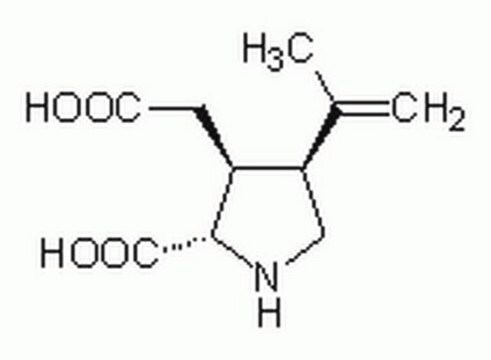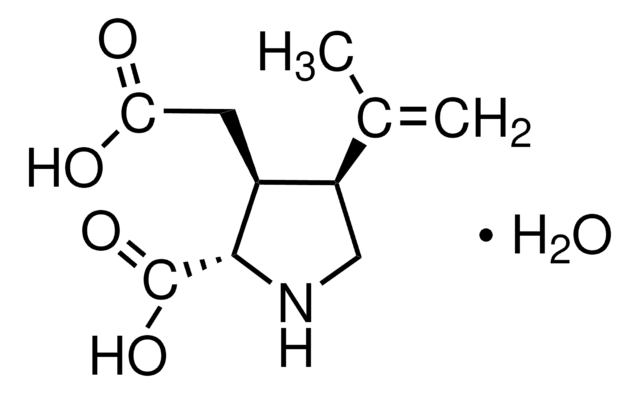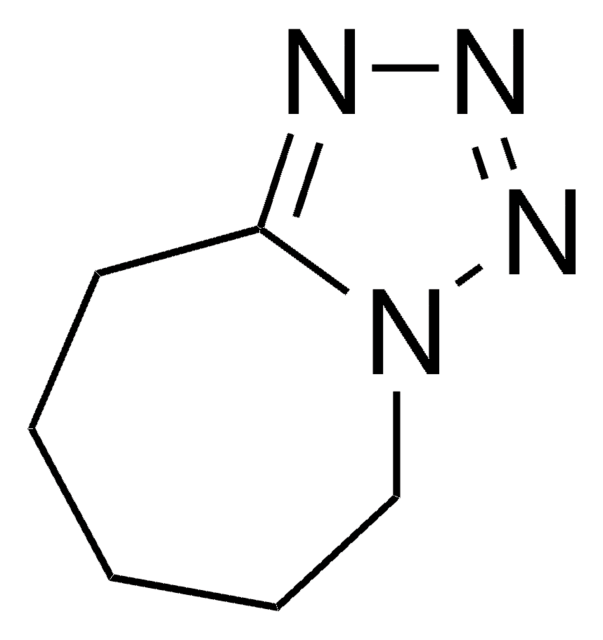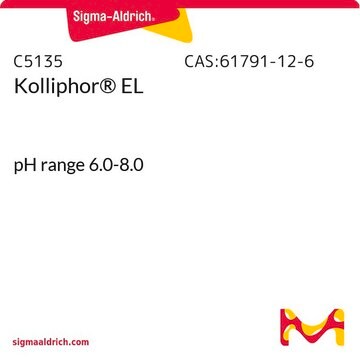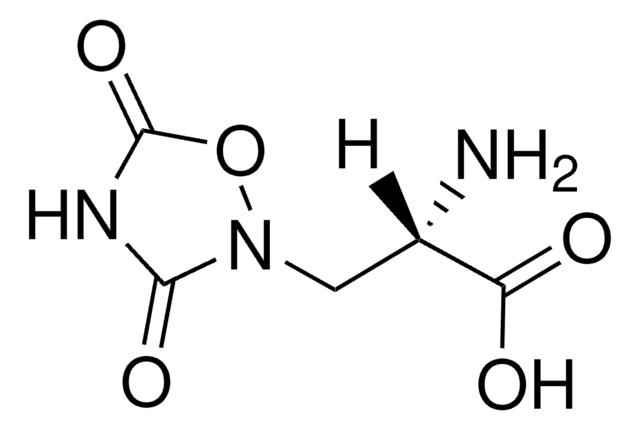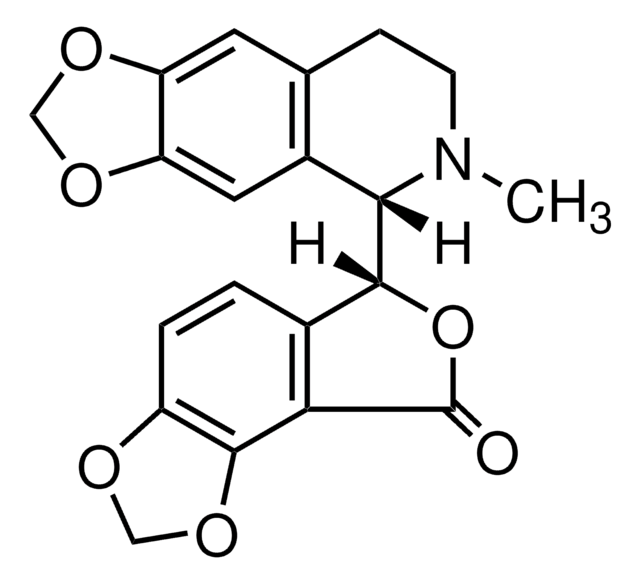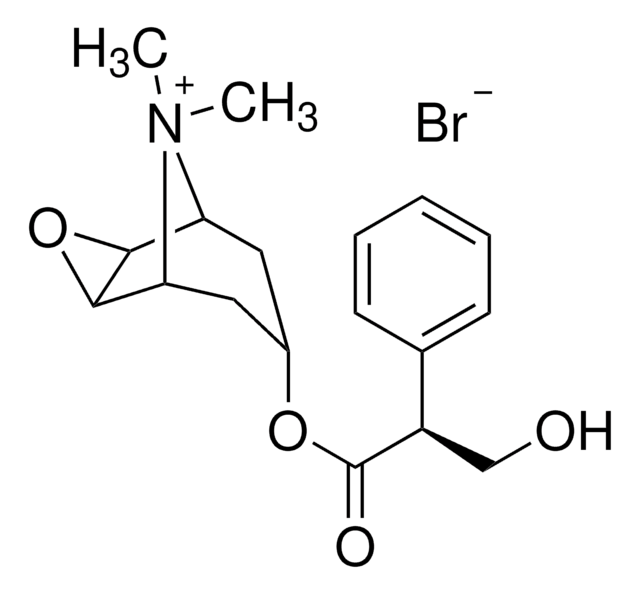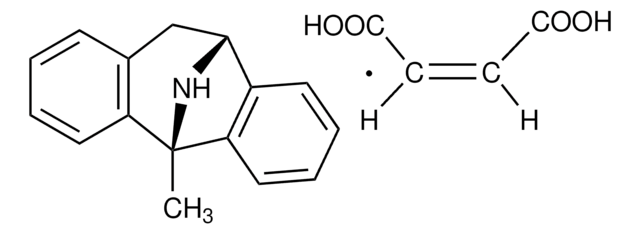K0250
Kainic acid monohydrate
≥99% (TLC), powder, ionotropic glutamate receptor (kainate class) agonist
Synonyme(s) :
Digenin, Kainate, 2-Carboxy-3-carboxymethyl-4-isopropenylpyrrolidine
About This Item
Produits recommandés
product name
Kainic acid monohydrate, ≥99% (TLC)
Niveau de qualité
Pureté
≥99% (TLC)
Forme
powder
Impuretés
Glutamate, free
Solubilité
H2O: soluble
Température de stockage
2-8°C
Chaîne SMILES
O.CC(=C)[C@H]1CN[C@@H]([C@H]1CC(O)=O)C(O)=O
InChI
1S/C10H15NO4.H2O/c1-5(2)7-4-11-9(10(14)15)6(7)3-8(12)13;/h6-7,9,11H,1,3-4H2,2H3,(H,12,13)(H,14,15);1H2/t6-,7+,9-;/m0./s1
Clé InChI
FZNZRJRSYLQHLT-SLGZUKMRSA-N
Informations sur le gène
human ... GRIA1(2890) , GRIA2(2891) , GRIA4(2893) , GRIK1(2897) , GRIK2(2898) , GRIK3(2899) , GRIK4(2900) , GRIK5(2901) , SLC1A1(6505) , SLC1A2(6506) , SLC1A3(6507)
mouse ... Gria1(14799)
rat ... Gria1(50592) , Grik1(29559) , Grik4(24406) , Grin2a(24409)
Vous recherchez des produits similaires ? Visite Guide de comparaison des produits
Description générale
Application
- tostudy mechanisms of excitation-induced apoptosis and epilepsy.
- to hamper themitochondrial function ()
- used to induce c-fosexpression in the mice′s brains, specifically targeting the dorsal hippocampus.()
Actions biochimiques/physiologiques
Caractéristiques et avantages
Notes préparatoires
Produit(s) apparenté(s)
Code de la classe de stockage
11 - Combustible Solids
Classe de danger pour l'eau (WGK)
WGK 3
Point d'éclair (°F)
Not applicable
Point d'éclair (°C)
Not applicable
Équipement de protection individuelle
Eyeshields, Gloves, type N95 (US)
Certificats d'analyse (COA)
Recherchez un Certificats d'analyse (COA) en saisissant le numéro de lot du produit. Les numéros de lot figurent sur l'étiquette du produit après les mots "Lot" ou "Batch".
Déjà en possession de ce produit ?
Retrouvez la documentation relative aux produits que vous avez récemment achetés dans la Bibliothèque de documents.
Les clients ont également consulté
Contenu apparenté
DISCOVER Bioactive Small Molecules for Neuroscience
Notre équipe de scientifiques dispose d'une expérience dans tous les secteurs de la recherche, notamment en sciences de la vie, science des matériaux, synthèse chimique, chromatographie, analyse et dans de nombreux autres domaines..
Contacter notre Service technique